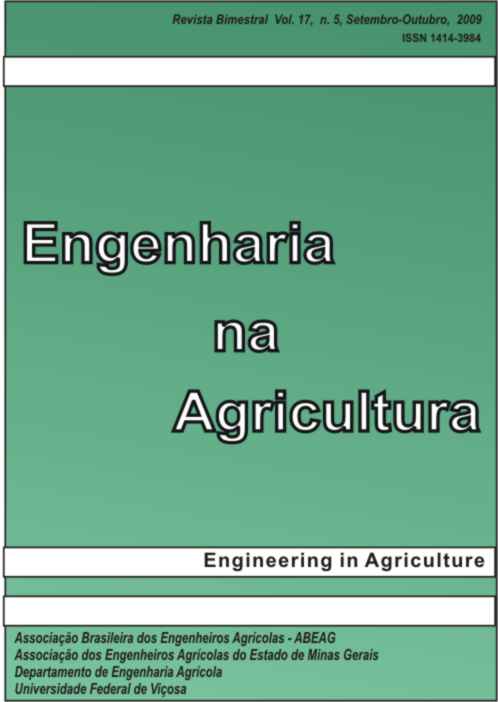EFFLUENT QUALITY OF WETLAND USED TO SWINE WASTEWATER TREATMENT FOR REUSE
DOI:
https://doi.org/10.13083/reveng.v17i5.165Keywords:
reciclagem da água, suinocultura, fertirrigação.Abstract
This object of this research was evaluate the use potential reuse of swine wastewater (SW) after the treatment in constructed wetlands systems (CWs). For this, were constructed five CWs measuring 24.0 m x 1.1 m x 0.7 m and dampproof with HDPE geomembrane were infilled with 0.4 m of gravel # 0. In CW1, CW2 and CW3 cattail (Typha latifolia L.), alternanthera (Alternanthera philoxeroides (Mart.) Griseb.) and grass tifton-85 (Cynodon dactylon Pers.) was cropped, respectively. In CW4, Alternanthera was cropped in the 1st part, Typha in the second, and Tifton-85 in the third part of the tank, In CW5, no planting was performed. After the filtration process in organic filter infilled with sugarcane bagasse, the SW was applied to CWs at 0.8 m3 d-1 flow rate, corresponding to a hydraulic detention time about 4.8 days. The effluents cannot be applied without restriction in agricultural fertirrigation, because the E. Coli counting exceeded the values recommended by the WHO. The high values of total suspended solids could cause fast emitters clogging, when used in trickle irrigation. However, the effluent quality is compatible with swine building hygienization and superficial or pressurized fertirrigation.Downloads
Downloads
How to Cite
Issue
Section
License
Authors who publish with this journal agree to the following terms:
The author(s) authorize(s) the publication of the text in the journal;
The author(s) ensure(s) that the contribution is original and unpublished and that it is not in the process of evaluation by another journal;
The journal is not responsible for the views, ideas and concepts presented in articles, and these are the sole responsibility of the author(s);
The publishers reserve the right to make textual adjustments and adapt texts to meet with publication standards.
From submission, the author is fully conceding the paper's patrimonial rights to the publication, but retaining the owner of its moral rights (authorship and paper's identification) according to Creative Commons Attribution-Noncommercial.








 Licensed by
Licensed by 